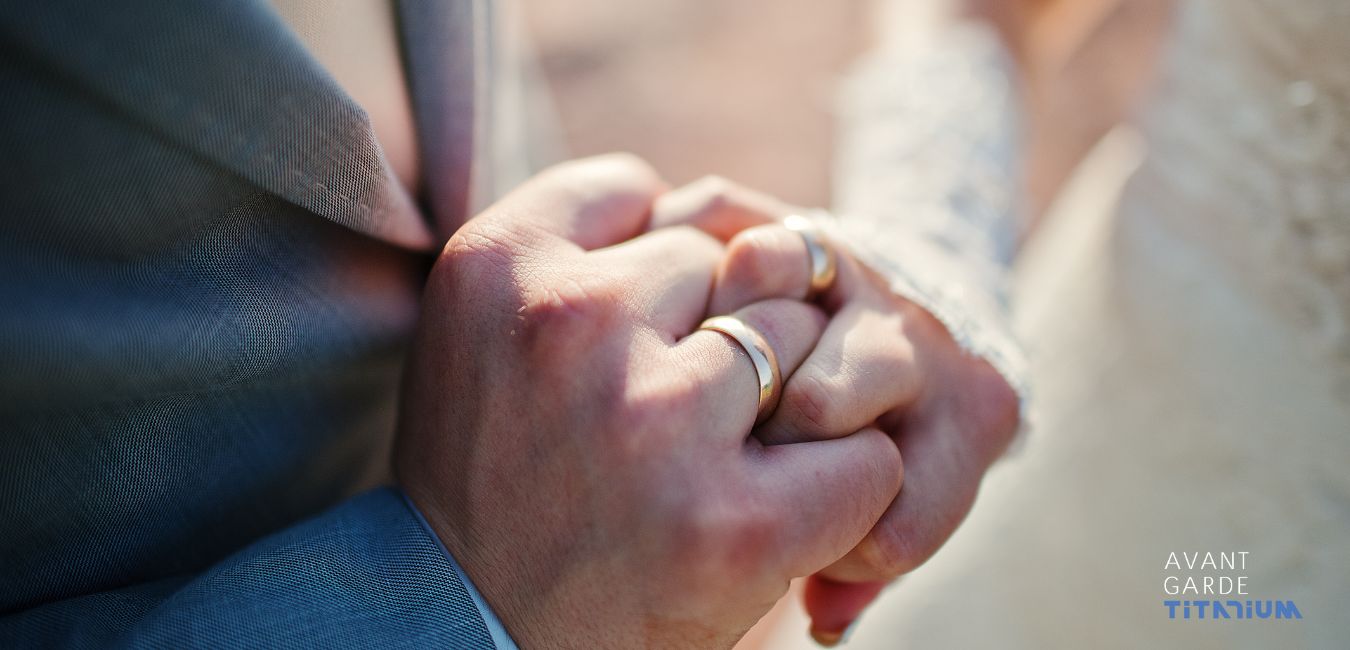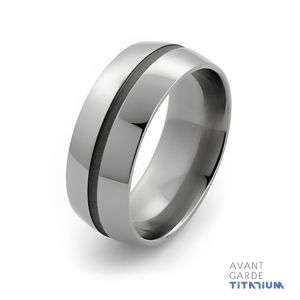When most people think of weddings, they envision a beautiful bride, a handsome groom, and of course, the exchanging of wedding rings. But have you ever stopped to think about why we wear wedding rings? And why specifically on a certain finger? With the rise of titanium wedding bands, there’s more to consider than just the look of the ring. Let’s dive deep into the significance of the wedding ring.
Wedding Rings Throughout History
The tradition of exchanging wedding rings is rich in history and cultural significance. Dating back over 3000 years, the Egyptians were among the first to use rings as a symbol of eternal love. Today, the wedding ring has become a universal symbol, and its meaning has expanded beyond cultural boundaries.
In medieval Europe, wedding rings were often made of gold, representing purity and wealth. In modern times, options like titanium wedding bands have become popular, blending tradition with contemporary style.
What Does a Wedding Ring Stand For Today?
A wedding ring has been a symbol of commitment and love for centuries. Today, its meanings are both traditional and personal, varying from one culture, religion, and individual to another. Common understandings and significances of a wedding ring today include:
Love and Commitment
A wedding ring, at its core, symbolizes an unending commitment. When a couple decides to exchange rings, they commit to remain faithful and true to one another. It’s a physical representation of their emotional bond. Each time they glance at their ring or feel its weight on their finger, they’re reminded of the promises they made.
The Meaning Behind the Circle
Beyond being a beautiful piece of jewelry, the wedding ring’s circular shape holds a more profound significance. Circles have no beginning or end, symbolizing eternity, wholeness, and perfection. In relationships, the circle reminds couples of the never-ending love they share and the perpetual bond they have created.
Equality
With changing social norms and the increasing acceptance of diverse relationships, the symbolism of wedding rings has expanded to embody equality. This includes equality within the relationship, reflecting a partnership where both individuals share rights, responsibilities, and decision-making.
The Placement of the Ring

Wearing wedding rings spans multiple cultures and generations, symbolizing love, commitment, and the institution of marriage. However, the specific hand and finger on which the ring is worn can vary across cultures and is deeply rooted in history, tradition, and sometimes religion.
The Left Hand
In many Western countries, the tradition of wearing the wedding ring on the left hand’s fourth finger has its roots in ancient Rome. The Romans believed the “Vena Amoris,” or the “Vein of Love,” ran directly from this finger to the heart. This romantic notion tied the ring’s symbolism with love and the heart, leading to the tradition of placing the wedding ring on this particular finger. Though this belief has been proven to be a myth, the symbolism remains, and the practice continues to this day.
Christianity
The influence of Christianity in Europe also played a role. During Christian wedding ceremonies, the priest might say “In the name of the Father, the Son, and the Holy Spirit,” and touch the thumb, index finger, and middle finger, respectively, and then place the ring on the “fourth” finger, symbolizing the unity of the Trinity and their commitment to each other in the eyes of God.
The Right Hand
Meanwhile, in countries like Russia, India, and some Eastern European nations, the practice of wearing a wedding ring on the right hand is more common. This has various reasons behind it, depending on the region.
Orthodox Christian Tradition
In countries like Russia, Greece, and India, many Orthodox Christians will wear their wedding ring on the right hand. This is rooted in biblical references, as the right hand is often associated with the power and authority of God. During the wedding ceremony, the priest will place the ring on the right hand, reflecting God’s right hand blessing the union.
Cultural and Regional Differences
In some cultures, the decision to wear the wedding ring on the right hand also comes from local customs and traditions rather than deep symbolic or religious meaning. In parts of India, for example, the right hand is considered more prominent and respectful, leading to this choice for wedding rings.
Personal Choice and Symbolism
Lastly, it’s worth mentioning that societal norms and personal preferences also play a role in this choice. Some people might choose to wear their wedding ring on a particular hand because of practical considerations, like their dominant hand or personal interpretations of cultural symbolism.
The choice of wearing a wedding ring on the left or right hand is influenced by a complex interplay of historical, cultural, religious, and personal factors. Different traditions reflect the diverse ways love and commitment are celebrated and symbolized around the world.
Shop Avant-Garde for Your Wedding Ring
As you approach the beautiful journey of marriage, understanding the rich history and the meaning behind the wedding ring can add an even more profound significance to this symbolic piece of jewelry.
And if you’re particularly inclined towards the sleek sophistication of titanium wedding bands, look no further than Avant-Garde Titanium. Dedicated to crafting high-quality titanium wedding rings that are stylish and built to last, Avant-Garde ensures that this symbol of your love remains as enduring as your commitment to each other.
Explore some of our favorite titanium wedding bands we’re positive you’ll love.
 Domed Titanium Ring – Classic Half Round Design
Domed Titanium Ring – Classic Half Round Design
Elegant and luminous, this domed titanium ring boasts a timeless half-round design with comfort-fit edges on either side for optimal ease. The ring’s standout feature is its impeccable geometry. Each piece is meticulously crafted and hand-polished to achieve a flawless curve and a silky-smooth finish.
 Hammer Finish Titanium Rings With Thin Grooves
Hammer Finish Titanium Rings With Thin Grooves
Sleek and rugged, these hammer-finished Hammer Finish Titanium Rings With Thin Grooves exude an understated elegance.The grooves break the surface of the ring into three parts. The center has a hammered texture, the sides are smooth. A melding of modernity and tradition, these rings are the epitome of timeless style.
 Domed Titanium Ring With Sandblast Finish Groove
Domed Titanium Ring With Sandblast Finish Groove
With an architecture that whispers modern elegance, the domed titanium ring features a distinctive sandblast finish groove. The subtle texture dances along the ring’s curvature, reflecting light with a muted grace. Strong as stylish, the titanium encapsulates a sense of resilience and refinement. It’s a piece that marries technology with artistry, creating a timeless accessory for those who appreciate understated sophistication.
Find Your Wedding Ring Special Meaning
While styles, designs, and materials (like the ever-popular titanium) may change over time, the essence of the wedding ring remains the same. It’s a circle of love, unbroken and eternal, a testament to the journey two people decide to embark on together. So, as you slide that ring onto your partner’s finger, remember the weight of its history and the depth of its meaning as you both discover your own.
Shop now! By clicking the link
1-513-520-0527
